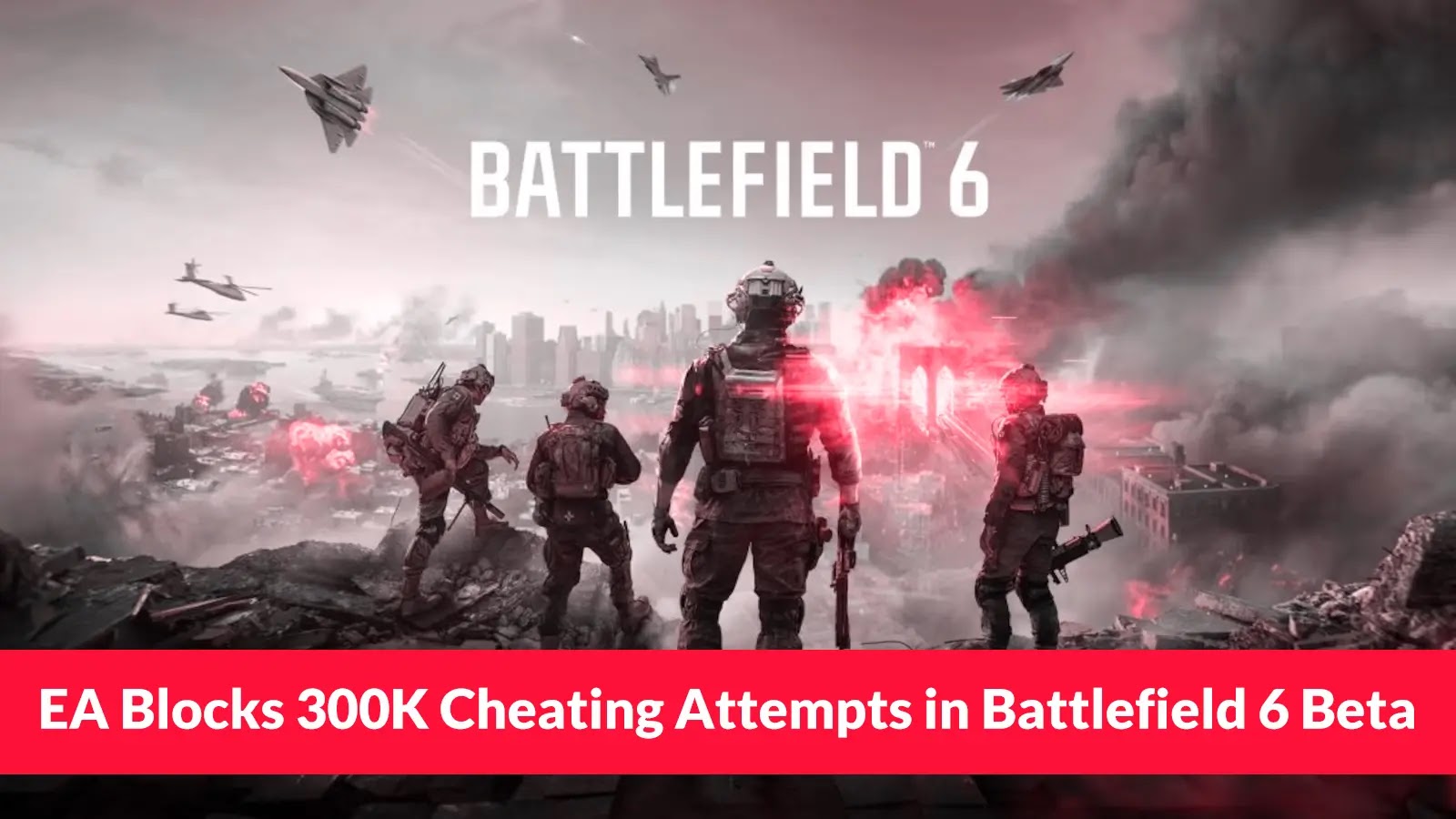
Electronic Arts Blocked 300,000 Attempts Following Battlefield 6 Beta Launch
The highly anticipated launch of the Battlefield 6 Open Beta brought with it not just widespread excitement, but also a stark reminder of the persistent cat-and-mouse game between game developers and those seeking to exploit system vulnerabilities. Electronic Arts recently disclosed that its robust anti-cheat measures successfully thwarted over 300,000 attempts to undermine fair gameplay, a significant achievement that underscores the critical role of robust security in the gaming industry. This incident provides valuable insights for cybersecurity professionals across all sectors, highlighting the scale of attempted exploits and the efficacy of proactive defense mechanisms.
The Battlefield 6 Beta: A Stress Test for Security
The Battlefield franchise, known for its expansive multiplayer battles, inherently attracts a competitive user base. With such high stakes, the incentive for cheating – whether through aimbots, wallhacks, or other unauthorized modifications – becomes substantial. Electronic Arts anticipated this threat, deploying their specialized anti-cheat systems, notably the Javelin anti-cheat system, right from the beta’s inception. Its primary objective was to detect and prevent unauthorized software and behaviors that could grant an unfair advantage to players or tamper with the game’s integrity.
Javelin and SPEAR: EA’s Anti-Cheat Vanguard
During the Battlefield 6 Open Beta period, EA’s Javelin anti-cheat system distinguished itself by blocking a staggering 330,000 attempts. These attempts included direct cheating behaviors and efforts to circumvent or tamper with the anti-cheat controls themselves. This success was publicly revealed by EA’s SPEAR Anti-Cheat Team in response to community concerns regarding perceived cheating incidents. The sheer volume of thwarted attempts speaks volumes about the constant threat landscape active in online gaming environments. It also demonstrates the necessity of a dedicated, vigilant team to monitor and counteract emerging cheating methodologies.
Beyond Gaming: Lessons for Enterprise Security
While the context is a video game, the underlying principles of security apply broadly to enterprise environments. The challenges faced by EA mirror those in protecting sensitive data, intellectual property, and critical infrastructure. The tactics used by cheaters (e.g., memory manipulation, code injection, bypassing security controls) are analogous to those employed by malicious actors targeting corporate networks.
- High Volume of Attempts: The 330,000 blocked attempts illustrate the sheer persistence of adversaries. Organizations must anticipate and prepare for a constant barrage of probes and attacks, not just isolated incidents.
- Proactive Defense: EA’s pre-emptive deployment of Javelin, rather than reactive measures, was key to its success. Similarly, enterprises need robust security frameworks, including preventative controls like intrusion prevention systems (IPS) and advanced endpoint detection and response (EDR) solutions, to stop threats before they escalate.
- Dedicated Teams: The SPEAR Anti-Cheat Team’s role highlights the importance of specialized security teams (e.g., SOC analysts, incident response teams) continuously monitoring, analyzing, and adapting to new threats.
- System Integrity: Preventing tampering with anti-cheat controls is akin to protecting the integrity of security agents, logging systems, or critical application binaries within an enterprise. Any compromise of these foundational elements can render subsequent defenses ineffective.
Remediation and Proactive Measures for Future Security
For organizations looking to bolster their defenses, drawing parallels from EA’s experience can be highly beneficial. While the immediate context is gaming, the strategies are universal:
- Continuous Monitoring and Threat Intelligence: Employ Security Information and Event Management (SIEM) systems to aggregate and analyze security logs, providing real-time visibility into attempted breaches and suspicious activities. Integrate threat intelligence feeds to stay updated on emerging attack vectors and methodologies.
- Robust Endpoint Security: Deploy next-generation antivirus (NGAV) and EDR solutions that offer behavioral analysis, fileless attack detection, and the ability to isolate compromised endpoints. Ensure these agents are tamper-proof to prevent attackers from disabling them.
- Application Whitelisting and Integrity Checks: Implement application whitelisting to control which executables can run on critical systems. Regularly perform integrity checks on critical system files and applications to detect unauthorized modifications.
- Secure Development Life Cycle (SDLC): Integrate security into every phase of software development, including threat modeling, secure coding practices, and regular security testing (e.g., penetration testing, static and dynamic application security testing – SAST/DAST).
- User Education and Awareness: While anti-cheat systems do the heavy lifting, educating users (employees) about phishing, social engineering, and safe computing practices remains a vital layer of defense.
- Incident Response Planning: Develop and regularly test a comprehensive incident response plan. This includes procedures for detection, containment, eradication, recovery, and post-incident analysis.
Conclusion
Electronic Arts’ revelation regarding the 330,000 blocked cheating attempts during the Battlefield 6 Open Beta is more than just a gaming headline; it’s a critical case study in real-world cybersecurity. It vividly illustrates the scale of persistent adversarial activity and the undeniable value of strong, proactive anti-tampering and anti-cheat mechanisms. For cybersecurity professionals, it reinforces the fundamental truth that robust defenses, continuous monitoring, and dedicated security teams are indispensable, whether the target is a multiplayer game or a multinational corporation’s sensitive data. The constant evolution of threats demands an equally agile and intelligent defense posture, proving yet again that the battle for digital integrity is never truly over.





